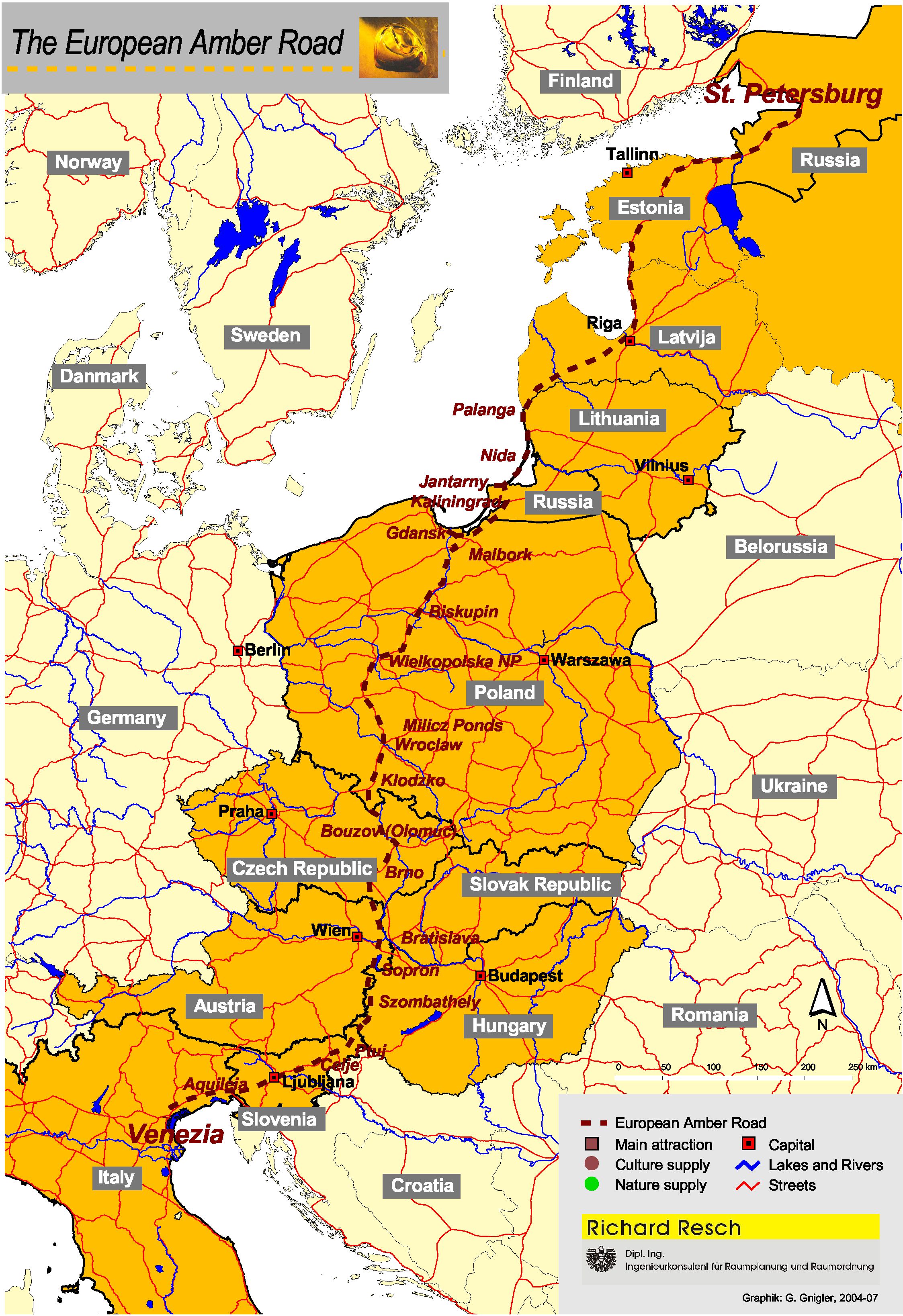European Connections
04 Feb 2014
I like travelling.
In the last ten years I’ve been to Budapest, Göteborg, Istanbul, Berlin and Glasgow. Florence was beautiful, although I’d expect nothing less when working with our International colleagues. Perhaps you joined me in Prague, when the volcano Ejafjallajökull erupted and left thousands of endocrinologists grounded. And can you believe it, most of them made the long journey overland to make ECE 2010 as successful as ever!
Road, rail, air, sea, tunnel, bridge, canal: Europe is connected by a transport network thousands of years old. The Amber Road (pictured right, image creator: DI Richard Resch) is an example of an ancient trade route connecting the Baltic Coast with the Mediterranean by way of the Vistula River.
Perhaps this legacy is why, despite borders and barriers, European researchers successfully collaborate on a scale that is not seen anywhere else in the world.
Connections are what endocrinology is all about. Hormones connect distant parts of the body. Scientists connect with other disciplines and other professions to understand more about how hormones work. And they connect with other endocrinologists at the European Congress of Endocrinology.
This is good for science, which is why the European Society of Endocrinology offers Meeting Grants and Basic Science Meeting Grants. Present an abstract at ECE 2014 and you make yourself eligible to receive one of these grants, saving your stipend for what it’s meant to cover: the science.
This year, from all corners of Europe, endocrinologists will travel to the historic city of Wrocław, which is graced with my favourite kind of public transport: the tram. But how are you getting here? Maybe you’d like to share your travel tips with your colleagues. Post a comment on our Facebook wall, or tweet with the hashtag #ece14 and let us know.
Bon Voyage!
See the ECE 2014 website for travel information and how to save up to 20% on flights with the Star Alliance™ Network.
Share this story
Top stories
Website Refresh!
20 Dec 2024